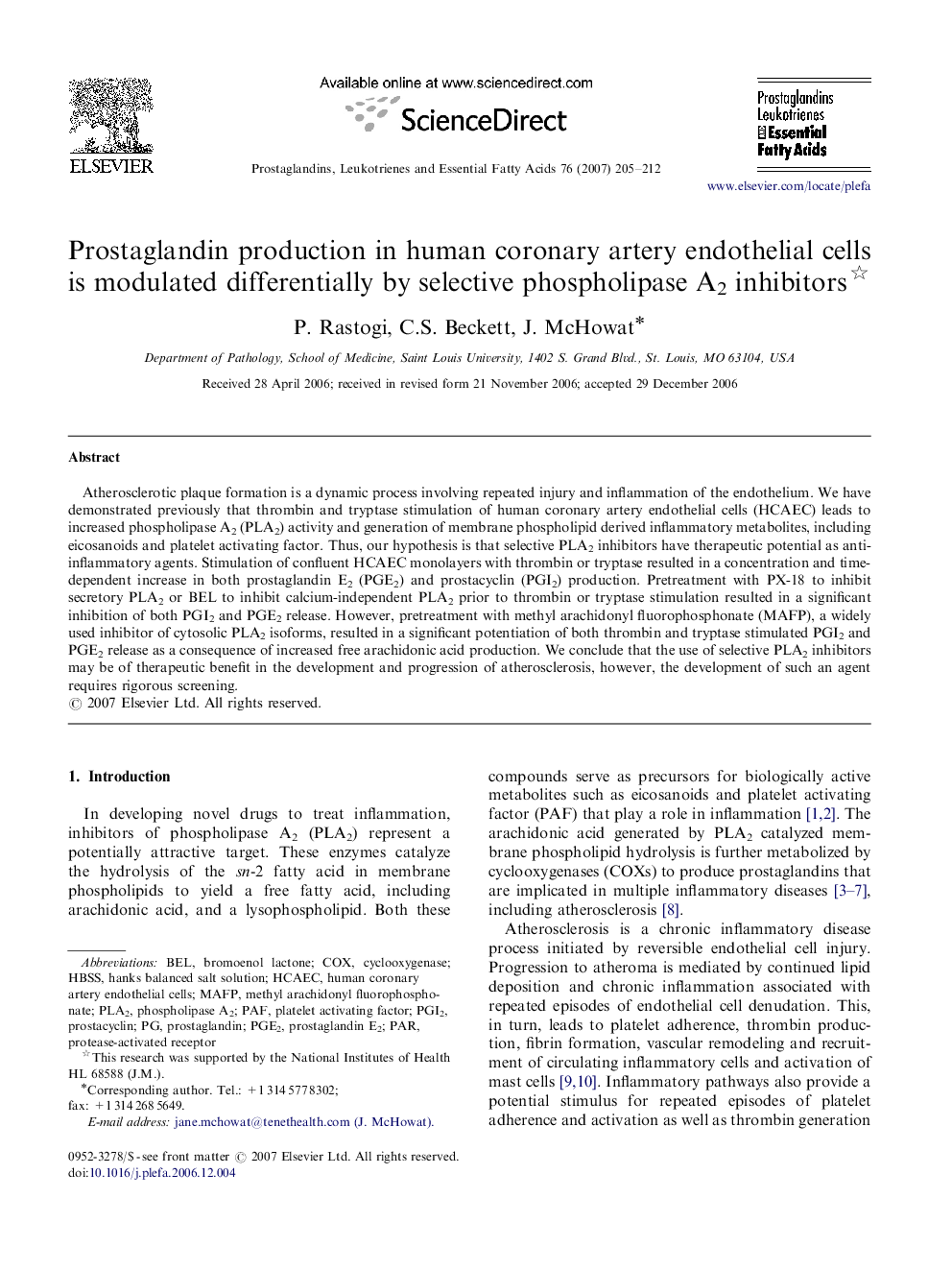| Article ID | Journal | Published Year | Pages | File Type |
|---|---|---|---|---|
| 2778407 | Prostaglandins, Leukotrienes and Essential Fatty Acids (PLEFA) | 2007 | 8 Pages |
Atherosclerotic plaque formation is a dynamic process involving repeated injury and inflammation of the endothelium. We have demonstrated previously that thrombin and tryptase stimulation of human coronary artery endothelial cells (HCAEC) leads to increased phospholipase A2 (PLA2) activity and generation of membrane phospholipid derived inflammatory metabolites, including eicosanoids and platelet activating factor. Thus, our hypothesis is that selective PLA2 inhibitors have therapeutic potential as anti-inflammatory agents. Stimulation of confluent HCAEC monolayers with thrombin or tryptase resulted in a concentration and time-dependent increase in both prostaglandin E2 (PGE2) and prostacyclin (PGI2) production. Pretreatment with PX-18 to inhibit secretory PLA2 or BEL to inhibit calcium-independent PLA2 prior to thrombin or tryptase stimulation resulted in a significant inhibition of both PGI2 and PGE2 release. However, pretreatment with methyl arachidonyl fluorophosphonate (MAFP), a widely used inhibitor of cytosolic PLA2 isoforms, resulted in a significant potentiation of both thrombin and tryptase stimulated PGI2 and PGE2 release as a consequence of increased free arachidonic acid production. We conclude that the use of selective PLA2 inhibitors may be of therapeutic benefit in the development and progression of atherosclerosis, however, the development of such an agent requires rigorous screening.
